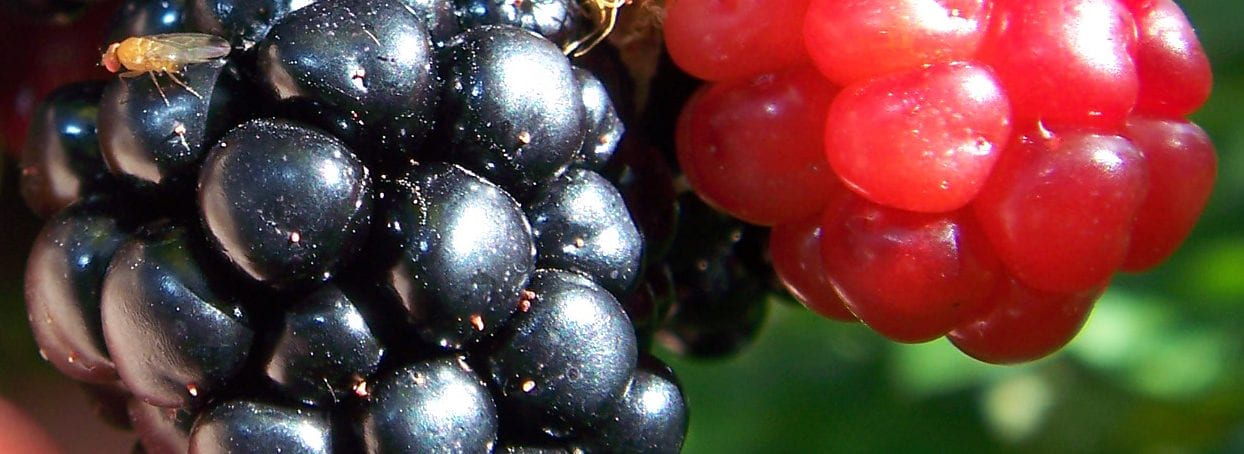Two female SWD were caught in one of two traps set in an Amelanchier hedgerow immediately adjacent to a June bearing strawberry field during the week ending June 25, 2018. The two other traps at this location are inside exclusion netting over a blueberry planting and caught zero SWD. These traps are being monitored by Laura McDermott, Eastern NY Commercial Horticulture Program, Cornell Cooperative Extension.

Strawberry harvest is winding down and there is concern about strawberry renovation practices and potential spillover of SWD into nearby fruit from cull strawberries. Blueberries, raspberries and cherries are ripening and harvests are beginning across New York. Population levels are still low and, so far, no sites are at sustained catch. In addition, few counties across New York have caught SWD — keep an eye on the NY distribution map, because things may change rapidly in the coming week.
It is time to plan your insecticide program for managing SWD. Take this time to determine what insecticides will best fit your overall management program and markets.
What has held back the trap catch this season?
SWD first catch occurred very early this year, but sustained and subsequent increases in trap catch didn't materialize. Environment may have played a roll — weather had intermittent heat waves in May, June was dry, and nights were cool. Last year's serious SWD infestations in blueberries and tart cherries may have made growers more vigilant and willing to invest in insecticide sprays early, keeping populations down.
 Why does the SWD population explode?
Why does the SWD population explode?
You can do the math. Let's think optimum conditions for SWD development. A single female can lay around 350 eggs during her lifetime, about 15 per day. The egg to adult phase of the life cycle takes as little as 6 days. So, one female in one day can result in 15 more adults 6 days later, and, during those 6 days, she will have laid another 90 eggs. 6 days after that, those 90 eggs will all be adults. Half of the 105 adults will be females, capable of laying ~350 eggs during their lifetimes...that's 18,375 eggs. A typical life span for SWD is 3 to 9 weeks and there are estimated to be about 10 generations per year in the US, depending on climate.

